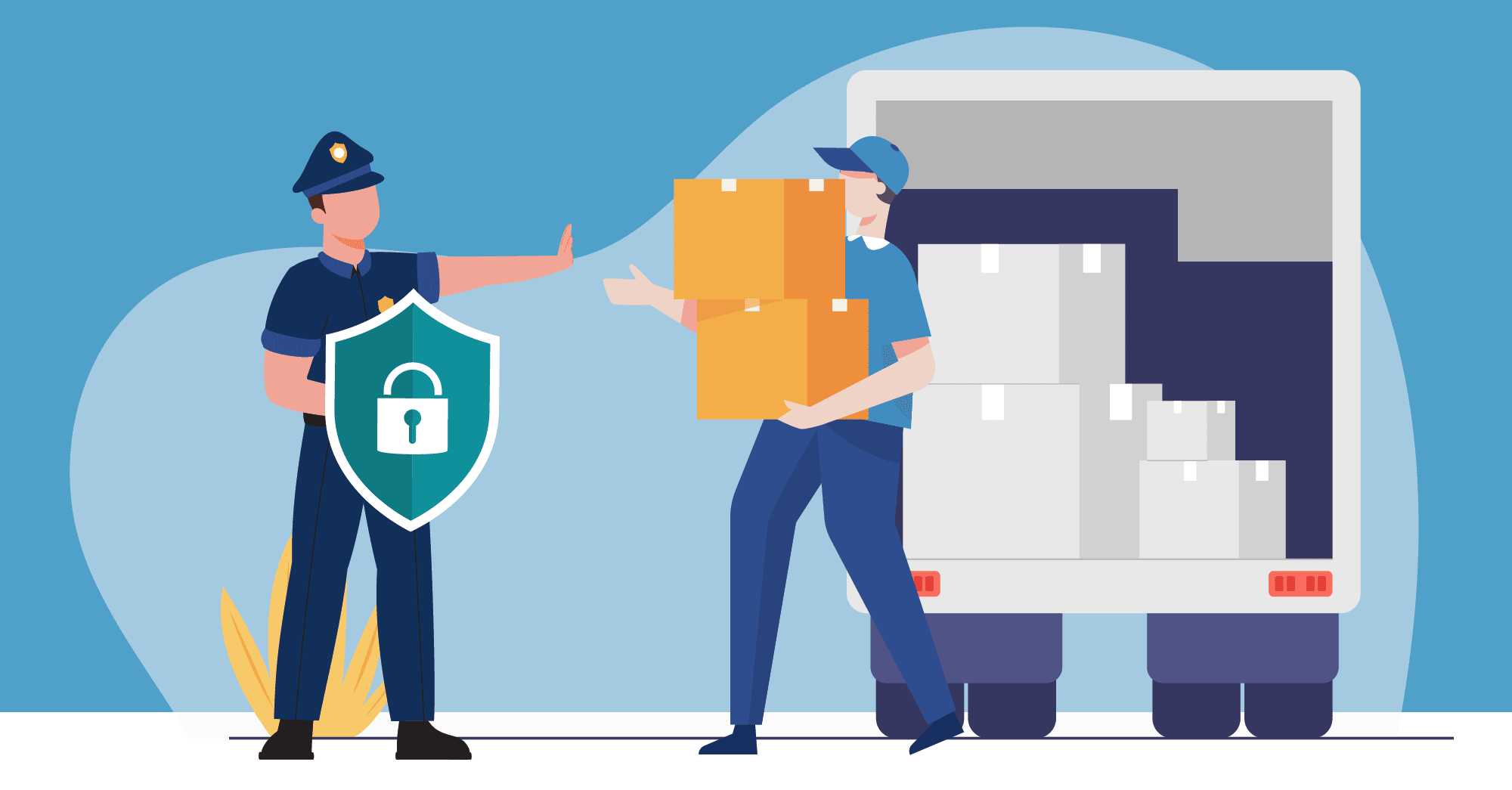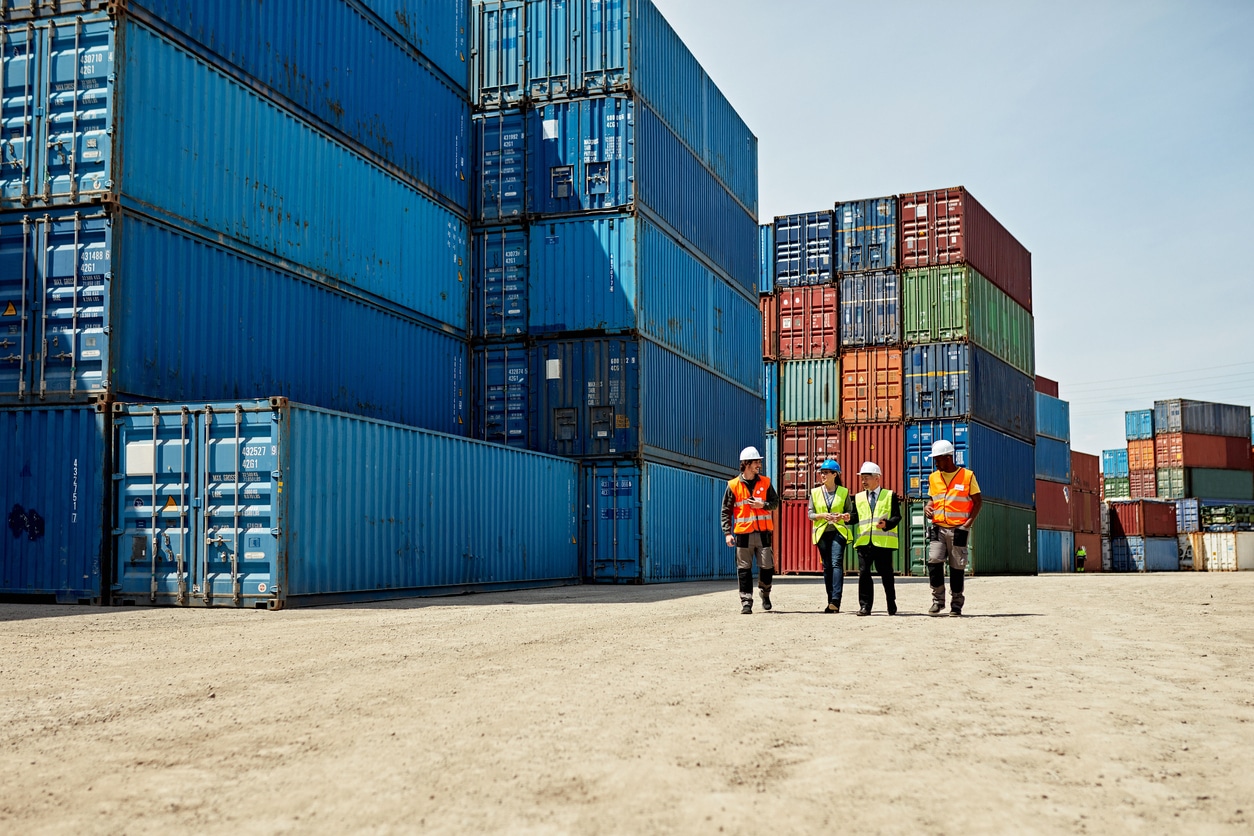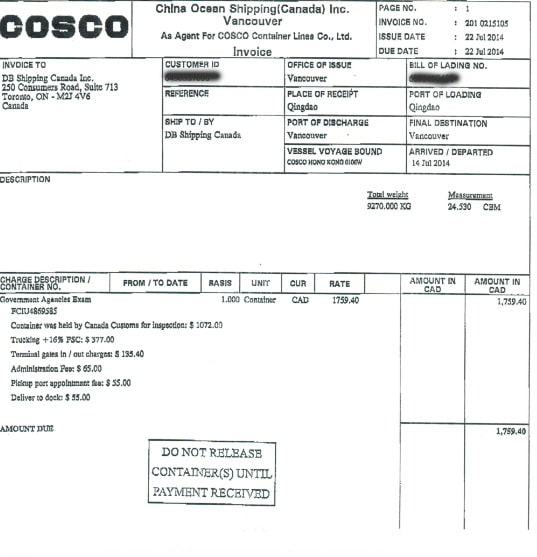Customs Examinations: What Sellers Need to Know

This article contains affiliate links that will allow us to earn commissions without any extra cost to you. Read our full disclosure here.
There are some things in ecommerce that you just accept as a painful part of business. One of those things is a customs examination, which can cost you anywhere from a few hundred to a few thousand dollars and delay your shipment.
In this article, we’ll go over the entire process, the types of customs inspections, and what you can do to minimize costs and delays.
Also Read: How to Clear Customs When Importing Into US and Canada
What Is a Customs Examination?
A customs examination or inspection is when port authorities inspect your container to make sure no drugs, weapons, or other contraband are sneaked into the country of destination.
As per the US Customs and Border Protection website:
An important part of the CBP mission remains the facilitation of legitimate trade. In addition to its own regulations, CBP enforces over 400 laws on behalf of over 40 other U.S. Government agencies. A large number of these import restrictions and requirements are designed to protect the American people from dangerous and illegal goods. CBP has undertaken a number of initiatives, such as the use of non-intrusive inspection technology, to increase its ability to examine cargo effectively without slowing the flow of trade, which plays a significant part in the U.S. economy.
Canadian customs authorities say roughly the same thing here, as well as most other countries I suspect.
Note that cargo inspection is not the same as cargo screening. While all cargo coming into the US gets screened, only around 5% are subjected to a physical inspection, and this is randomly determined (for the most part) or at the discretion of customs authorities.
Who Gets Inspected?
There’s really no definite answer to this, so it’s quite hard to prepare when your shipment gets selected for a customs exam. Speaking from experience, it’s safe to expect to get examined a couple of times per year.
Inspections can be triggered by various data factors collected across various screening sources based on the US Customs and Border Protection’s (CBP) mandate. However, customs authorities are not required to disclose information as to who gets inspected for national security reasons, so don’t expect an explanation as to why your container was chosen.
What we know for sure is that the CBP is empowered to examine any shipment coming into the US (policies are generally similar when importing into Canada and most other countries). We also know that only about 5% of all containers coming into the US are physically inspected.
Some things that may be taken into consideration include your supply chain details and country of origin. The CBP is also reportedly more likely to examine your shipments if you’re either a first-time importer or a repeat offender after being flagged in a prior examination.
You Generally Have No Idea When and How You’ll Be Inspected
Once or twice (or even a few times) per year, I get notified that one of our shipments has been selected for a customs examination. One of those times occurred a couple of years ago at the Port of Vancouver as I was just informed it would be a “Dockside Examination.”
Earlier that year, we were footed with a bill for over $1000 when a container was taken aside (i.e., transported many kms to an offsite facility) and inspected. So my suspicion was that a dock side examination is performed at the port, meaning it doesn’t have to be transported to another facility and the charges won’t be as high. Fast forward a few days and what was supposed to be a “dockside” exam became a much more intrusive CEF exam. My initial suspicion is that I was misinformed about this being a dockside exam.
Point is, you generally have no warning as to when your container will get examined and which type of inspection authorities will conduct.
How Intensive Is a Customs Examination?
There are essentially three types of examinations the CBP may conduct, which are pretty much comparable to the inspections conducted by port authorities elsewhere.
In the US, these examinations are generally cumulative, meaning, if there remains suspicion on your container after a non-intrusive X-ray exam, the authorities will proceed to a more intrusive inspection.
1. VACIS/NII X-ray Exam OK
VACIS/NII (Vehicle and Cargo Inspection or Non-Intrusive Inspection), X-ray, and Large Scale Imaging (LSI) examinations all mean the same thing. This is the most typical inspection that authorities conduct.
An X-ray is performed of the container to identify if an intrusive examination is needed. The goal of the inspection is merely to look for contraband items or other cargo that do not match the paperwork provided. This will set you back around $150 to $350 with potential additional costs to and from the inspection site. This inspection generally takes 1-3 days.
2. Tailgate/Backdoor Exam NOT AS BAD
This is what some refer to as pier/dockside examination, wherein customs officers will open your container and conduct a visual inspection. They’ll lightly inspect the goods closest to the door and if they don’t like what they see, they may refer the container for an off-site examination. Unlike in the previous type, where your container seal stays intact, the CBP will break the seal of your container to take a look inside. This type of inspection can cost up to $350 per container, with transportation costs (if necessary) to boot. You can expect a delay of 5-6 days if you get subjected to this type of inspection.
3. Contraband Enforcement Team (CET)/Intensive Exam BAD
This involves an in-depth search of your container and the goods inside. The container is moved from the port to another facility and completely de-stuffed (i.e., all of the goods are unloaded). Customs officers then use a variety of tools to test for drugs, weapons, and other contraband.
This could cost a couple of thousand dollars, and you will also be made to pay drayage costs, labor, and detention costs if the CBP ends up keeping your container for longer than expected. Another thing to watch out for is the inspection staff might not restore your container and goods to their condition before inspection. In some cases, some goods end up getting damaged, and the inspecting team cannot be held responsible for this.
This kind of examination could take somewhere between a week to a month, depending on the number of containers inspected.
Also Read: Common Importing Mistakes
How Much Does a Customs Examination Cost?
In case you’re not aware, you as the importer must bear all of the costs associated with an examination, which IMO is a severely flawed system, but it is what it is.
The costs will include things like:
- Costs of the inspection itself
- Costs for a bonded trucker/carrier in case your container needs to be moved
- Labor costs
- Storage fees from the port and/or carrier equipment
As stated earlier, a VACIS and a tailgate exam could cost around $150 to $350 per container, while an intensive examination will set you back anywhere from $500 to a few thousand dollars.
A CEF Examination Cost Me Almost $2000
As mentioned earlier, I had the misfortune of having one of my containers subjected to a container examination facility (CEF) exam. This is an extremely frustrating part of importing as the end-result of these examinations is normally either a) a big invoice or b) a bigger invoice.
The freight forwarder in charge of this shipment issued us the invoice and it was as follows:
You’ll notice not only were we charged for the actual examination of the container, we were also charged for the moving of the container, various “in/out” charges from the port of Vancouver, and of course, the obligatory admin fee (which we were actually charged for twice). Adding to the frustration, you normally get five days to pick up a container. Common sense would say that these five days should begin after the examination (as you can’t pick up the container prior to this) but every day in examination counts against this.
Keep in mind, despite the examination being completely random, and even if they found nothing improper with the shipment, we were still invoiced for this. So expect to foot the bill in case your container gets selected for inspection.

Can I Avoid Being Subjected to a Customs Examination?
Since you cannot know for sure when your container will get subjected to a customs examination, it’s also tricky coming up with hard strategies to avoid them. That being said, there are some generally accepted tips that could minimize your costs and delays in case of inspection.
Be Customs-Trade Partnership Against Terrorism (C-TPAT) Certified
C-TPAT is a voluntary security program focused on improving the security of a company’s supply chain. Members enjoy a few key benefits, including a reduced number of inspections and priority treatment in case you do get subjected to a customs examination.
Have Your Documents in Order
Making sure that your documents are in order will greatly reduce the delay time in case you do get subjected to a customs inspection. Make sure that your customs broker has all the necessary documents from the supplier, overseas agents, or any other parties involved with the shipment prior to departure of the shipment.
Work with Trusted Logistics Companies
It should go without saying that having a great logistics provider with sophisticated knowledge about shipping and supply chain lessens your chances of being subjected to inspections or at least being footed a hefty bill. Conversely, working with providers who often get flagged upon inspection or have a bad reputation can increase your chances significantly.
Conclusion
Long story short, an importer likely has cause to resent the customs examination process a great deal. However, currently, it is what it is, and it’s one of those inevitable costs of being an importer.






Another informative and helpful article. Thanks for that Dave!
Glad to hear it helped, Terry!